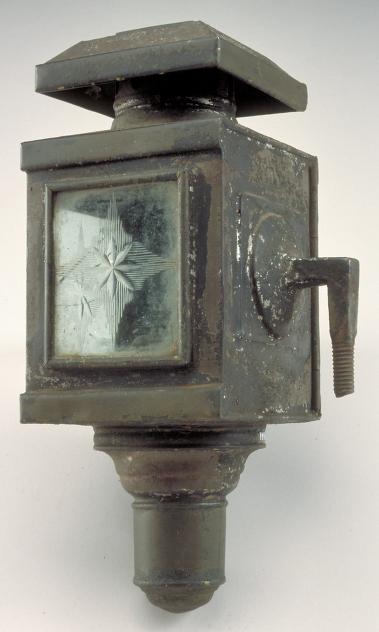




Advanced Search
| Online Collection |
|
||||||||||||||||||||||
|
This carriage lamp was made around 1830, and it shows the marks of the most up-to-date manufacturing of its day. Its tin seams are sealed by solder, the same technology used to seal tin cans, and it burned whale oil, the brightest, cleanest oil of its day. This lamp was from what might have been the first buggy in western Massachusetts, built in Greenfield for C. Stratton, a "surgeon dentist," by Field and David Long, Jr. of Greenfield. Buggies were invented in the United States. Prior to 1813, coaches had been imported from Britain, which made them very expensive. The interruption of British trade during the War of 1812 led Lewis Downing of Concord, New Hampshire, to begin manufacturing the first American coaches in 1813. Early carriages in the United States followed European designs, but in 1826 they produced the buggy. It was light, with elliptical springs that were placed perpendicular to the direction of travel. It had large, thin wheels, and a hood that could be raised or lowered. Buggies seated only one or two people. These design innovations were created specifically for the rough roads of the Early Republic. Buggies were built in the United States until the spread of the automobile in the 1910s.
|
Carriage Lamp
|
| |
Home | Online Collection | Things
To Do | Turns
Exhibit | Classroom | Chronologies | My
Collection
About This Site | Site Index | Site Search | Feedback


